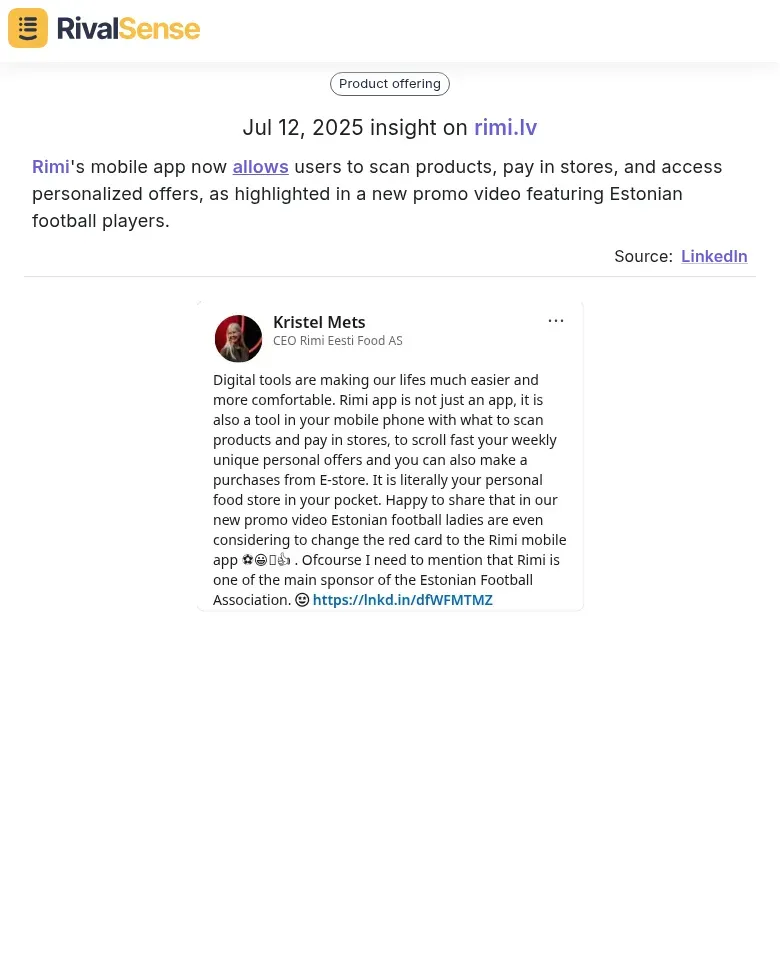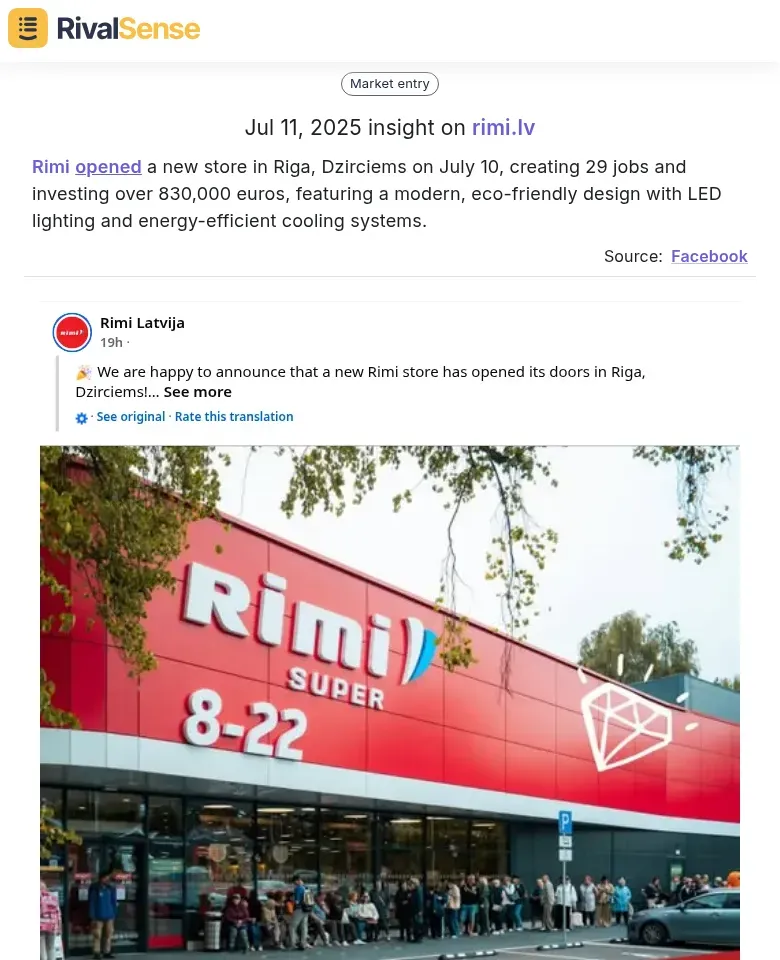Actionable Strategies for Retail Training Program Research
In today's competitive retail landscape, developing effective training programs isn't just about internal best practices—it's about understanding how your competitors are preparing their teams for success. Retail training program research through competitor analysis has emerged as a critical strategy for businesses seeking to gain a competitive edge while optimizing their workforce development investments.
Competitor analysis reveals actionable insights that can transform your training approach. By examining how leading retailers structure their onboarding processes, skill development modules, and performance metrics, you can identify gaps in your own programs and discover innovative training methodologies that drive measurable results.
Quick Assessment Checklist:
- ✅ What training topics do competitors prioritize?
- ✅ How do they deliver training (digital, in-person, hybrid)?
- ✅ What certification programs do they offer?
- ✅ How do they measure training effectiveness?
This strategic intelligence enables you to make data-driven decisions about resource allocation, curriculum development, and technology investments. Rather than relying on guesswork, you can leverage proven strategies from market leaders while identifying opportunities for differentiation.
This article will guide you through systematic approaches to researching competitor training programs, from identifying key players to extracting actionable insights that enhance your training efficiency. You'll learn practical frameworks for gathering intelligence, analyzing competitor strategies, and implementing improvements that deliver both employee satisfaction and business results. The goal isn't to copy—it's to innovate based on market intelligence that positions your retail training programs ahead of the competition.
Leveraging Technology in Training Programs
In the fast-evolving retail sector, leveraging technology in training programs is no longer optional—it's essential. Tracking competitor tech implementations provides real-world examples to benchmark against and reveals industry standards your team must meet. Start by incorporating mobile app functionalities into your training modules.
For example, RivalSense recently identified that Rimi's mobile app now allows users to scan products, pay in stores, and access personalized offers. Monitoring such competitor updates is valuable because it reveals technology adoption patterns that should inform your training priorities. If competitors invest in specific features, your staff must be trained to match or exceed those capabilities.

Practical tip: Partner with app developers to create custom modules that mirror your actual retail operations for seamless transition from training to real-world application. Digital tools can simulate in-store experiences, preparing employees for any scenario.
Implementation Checklist:
- 🔍 Audit current training tools for gaps
- 🎯 Select technologies aligning with objectives
- 🧪 Pilot with small group and iterate
- 🚀 Company-wide rollout with support resources
Eco-Friendly and Modern Store Designs as Training Benchmarks
Sustainability and modern design have become critical components of retail operations, making them essential training topics. Observing competitor store designs provides tangible benchmarks for operational excellence and sustainability practices you can incorporate into training curricula.
When RivalSense tracked Rimi's new store in Riga featuring modern, eco-friendly design with LED lighting and energy-efficient systems, it highlighted how competitors integrate sustainability into operations. These insights help shape training programs around emerging industry standards for environmental responsibility.

Actionable Training Framework:
-
Eco-Practices Workshops
- Conduct recycling/energy-saving sessions
- Use competitor case studies as benchmarks
-
Store Layout Navigation
- Train on smart customer flow designs
- Incorporate virtual competitor store tours
-
System Operations
- Hands-on training for energy-efficient equipment
- Daily audit checklists for compliance
Community Impact and Job Creation in Training Narratives
Retail businesses significantly influence local economies through job creation and community development. Integrating these narratives into training programs helps employees understand their broader organizational impact beyond daily tasks.
Competitor expansion activities, like Rimi opening a new store in Liezere, demonstrate market growth patterns and community investment strategies. Tracking such developments helps contextualize training content around real-world economic contributions.

Training Integration Tactics:
- 📖 Embed community impact stories in onboarding materials
- 🎭 Develop role-plays around local economic scenarios
- 🔄 Regularly update with fresh competitor case studies
Engagement Checklist:
- ✅ Highlight community initiatives in training
- ✅ Include beneficiary testimonials
- ✅ Use competitor benchmarks to inspire
Actionable Steps to Implement Competitor Insights
Translating competitor observations into training improvements requires a systematic approach. Begin with focused data collection and move through structured implementation phases to maximize impact.
Start by identifying key competitors and their training methodologies through continuous monitoring. Compare their approaches against your current programs using gap analysis to identify immediate opportunities for enhancement.
Implementation Roadmap:
-
Data Gathering
Track training materials, employee feedback & delivery methods -
Benchmark Analysis
Conduct SWOT comparisons against competitors -
Innovation Adaptation
Pilot competitor-inspired modules (e.g., gamification) -
Impact Measurement
Track engagement scores & customer satisfaction -
Continuous Refinement
Update quarterly based on new competitor intelligence
Conclusion and Next Steps
Competitor-informed training programs create significant competitive advantages through improved employee readiness and operational alignment. The key lies in systematically converting market observations into actionable curriculum enhancements.
Immediate Action Plan:
- 🔄 Establish monthly competitor training audits
- 🌐 Join industry forums for trend intelligence
- 💬 Implement employee/customer feedback loops
- 🤖 Evaluate emerging training technologies
- 📊 Create competitor insight dashboards
Recommended Resources:
- 🛠️ RivalSense for competitor tracking
- 📈 Deloitte's Retail Trends reports
- 🎓 LinkedIn Learning training modules
Ready to transform your retail training with competitor insights? Try RivalSense for free at https://rivalsense.co/ and get your first competitor report today!
📚 Read more
👉 Step-by-Step Guide to Tracking Competitor Hiring and Layoffs
👉 Decoding Competitor Security Moves: Sprout Social's 2FA Enforcement
👉 Competitor Community Engagement Analysis: A Practical Guide for Business Leaders
👉 Boost Growth with Competitive Intelligence in Online Marketing
